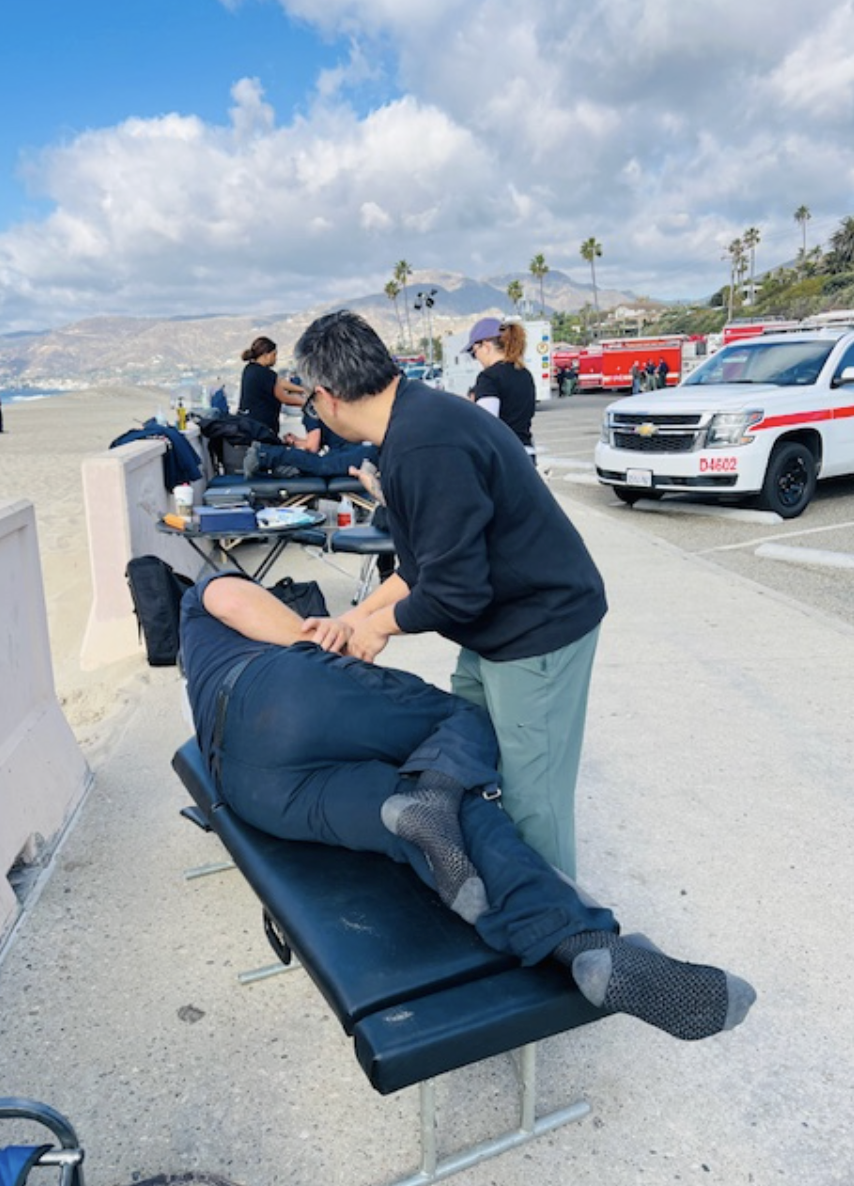KSP x BHB: Interview with Dr. Jorge Arvizu
By Timothy Lee
Additional reporting by Isleen Lee
During the January Palisades and Eaton fires, hundreds of volunteers across Southern California flocked to support first responders and displaced people. Dr. Jorge Arvizu was one of the countless volunteers who rushed to help fire-struck Californians. As a chiropractic doctor with 23 years of experience, Dr. Arvizu offered his chiropractic services to firefighters and emergency workers in the Palisades fire. Dr. Arvizu shared his experience as an on-site volunteer working in the Malibu region.
Q: How did you first hear about the volunteering opportunities with the fires, and what prompted you to help?
I was trying to coordinate something we could do [to offer] treatment to the heroes who were helping all the people in both Palisades and Altadena. A colleague of mine knew a person with a contact at the L.A. Fire Department. So they set up a situation where a handful of doctors would try to go out there. They set something up for the following Friday, and I immediately knew that it was something I wanted to do because it's one of those things where I can use a skill to help the people helping everybody else.
Q: Please describe when and where you volunteered, and who you assisted.
We set up a chiropractic therapy triage for the fire department at their headquarters at Zuma Beach in Malibu. The sole purpose of our time there was to provide chiropractic services to all the firefighters and emergency personnel, specifically working in the Palisades region.
Q: How did you feel being able to help out the firefighters during such a dire time?
It was a good feeling to be able to provide a service that I'm very good at, knowing the significant hours that these guys had to put into doing what they do. It was a neat experience to provide a service where you help alleviate [the first responders] in between shifts.
Q: Were there any specific memories or stories of resilience and kindness you'd like to share?
It was just sad. You look at people putting in extreme hours [in] horrible conditions, but as bad as the situation was, most of these guys still had a smile on their faces. They were going through some pretty difficult times, and they were very appreciative of what we were doing. Most of these guys, as they got called back into work, didn’t hesitate. There was a line of firefighters waiting to get treated, but once the call came, they all knew they had to go.
Q: What would you say was the best thing that came out of being able to help the firefighters?
Just knowing that I did something for selfless people, who were sacrificing everything — including their lives — to keep us all safe. Being able to provide something to people like that just gave me a great feeling. One of the things that I immediately did once I came back was, I posted a social media post to kind of talk to other colleagues, to say, Hey, I know some of you guys are probably thinking what I'm thinking of how to get there, but this is what I did. I had some colleagues reach out to me after I made a couple of social media posts, and they were able to do something similar to what I did for the firefighters in Pasadena who were helping with the Altadena fire.
*This interview has been edited for clarity and length.
Photo Credits: Dr. Jorge Arvizu
This article is part of a hyperlocal journalism project between Boyle Heights Beat and the Koreatown Storytelling Program.





